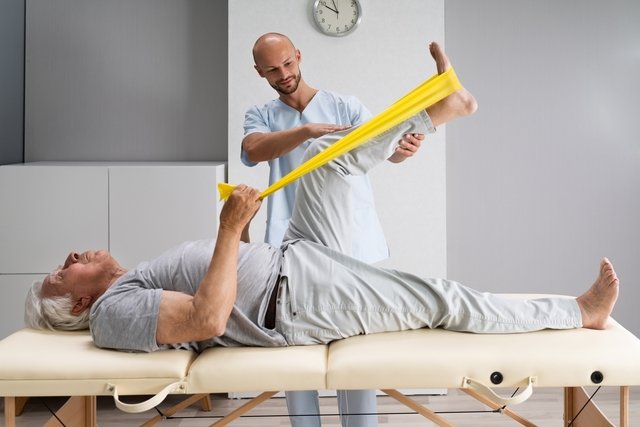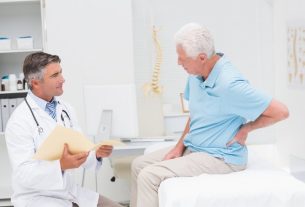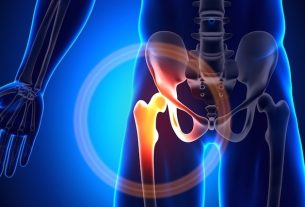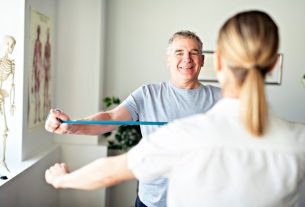Knee osteoarthritis is a condition characterized by wear and tear on the joint, which leads to local inflammation, resulting in symptoms such as pain, redness, swelling and difficulty moving the knee. Over time, it is natural for osteoarthritis to worsen and, therefore, more serious symptoms may begin to appear, such as joint deformities and intense pain, which can make the person have difficulty walking and a greater tendency to limp.
This situation is more common in older people, due to the natural wear and tear of the joints, however it can also be a consequence of strong blows to the knee or inflammatory diseases, for example.
It is important that after identifying the symptoms of osteoarthritis, the orthopedist is consulted so that tests can be carried out to confirm the change and the most appropriate treatment can be initiated, which may involve the use of medication, physiotherapy and, in the most serious cases, , surgery.

Knee osteoarthritis symptoms
The symptoms of knee osteoarthritis arise due to wear and tear on the knee joint, the main ones being:
- Knee pain after exertion, which may improve with rest;
- Stiffness when getting out of bed in the morning or after long periods of rest that improves after 30 minutes;
- Presence of crackling noises when moving or “crackling”
- Swelling and heat, usually in the inflammatory phase
- Feeling of increase in knee size, due to the growth of the bones around the knee
- More limited movementsespecially straightening the knee fully
- Difficulty supporting the leg in floor
- Weaker thigh muscles and more stunted.
It is common for both knees to be affected, however the symptoms may be different between them, as the degree of involvement of each joint may vary.
In the presence of symptoms possibly indicative of knee osteoarthritis, it is important that the orthopedist is consulted so that the diagnosis can be made, the possible cause identified and the most appropriate treatment initiated.
How to confirm the diagnosis
The diagnosis of osteoarthritis in the knee is made by the orthopedist based on the evaluation of the symptoms presented and a physical examination of the joint, in which movements are performed with the knee with the aim of verifying mobility, the presence of clicking and pain, as well as its intensity, and an assessment of risk factors for knee arthritis is also made, as it is more common in people over 50 years of age.
In addition, the doctor may request imaging tests, such as X-rays, computed tomography, magnetic resonance imaging and/or ultrasound of the knee to assess the degree of wear on the joint and guide the most appropriate treatment.
Main causes
The main causes of knee osteoarthritis can be:
- Natural wear and tear on the joint, which occurs due to age;
- Being very overweight;
- Direct trauma, such as falling to your knees, for example;
- Inflammatory disease associated with misuse of the joint.
This problem mainly affects people over 45 years of age, but if the person is very overweight or has some of these risk factors, for example, they may develop osteoarthritis at a young age, around 30 years of age.
How the treatment is carried out
The treatment of knee osteoarthritis must be carried out according to the orthopedist’s guidance, who may indicate the use of anti-inflammatory medications, analgesics or nutritional supplements to help restore the knee joint.
The main treatments for knee osteoarthritis include:
1. Medicines
The medications recommended by the orthopedist for knee osteoarthritis aim to reduce pain and discomfort in the joint.
The main medications recommended are:
- Paracetamol: it is the first-choice treatment indicated to reduce mild to moderate pain;
- Opioid analgesicssuch as tramadol: it is indicated for severe pain in more serious cases of knee osteoarthritis;
- Duloxetine: It is used to help relieve pain in cases of chronic pain.
Furthermore, there are other medications that may be indicated for knee osteoarthritis, such as injection of hyaluronic acid into the joint, or the use of oral glucosamine and chondroitin sulfate supplements. However, more studies are still needed on its use in knee osteoarthritis. Check out more medication options for osteoarthritis.
2. Exercises
Some exercises for knee osteoarthritis include stretching the leg muscles, which can be done by the person themselves or with the help of a physiotherapist, or cycling.
However, the ideal is that the exercises are done with the guidance of a physiotherapist, as when performed incorrectly or with a very painful joint, they can worsen the symptoms. See the main exercises for osteoarthritis.
3. Physiotherapy
Physiotherapy for knee osteoarthritis should preferably be carried out every day, at times of greatest pain. The physiotherapist must evaluate the joint and advise the best treatment, respecting each person’s limitations. Specific equipment and stretching and muscle strengthening exercises can be used in physiotherapy sessions. Find out how physiotherapy for osteoarthritis is performed.
4. Surgery
Surgery is indicated in cases where the use of medication and physiotherapy have not been effective in relieving symptoms, and the pain persists, even after months of conventional treatment.
Surgery can be done by removing the knee joint and placing a prosthesis in its place. After that, a complete recovery is usually possible. However, it is necessary to undergo physiotherapy sessions to speed up recovery. Find out how it is done and how long recovery takes.
5. Natural treatment
A good natural treatment for osteoarthritis in the knee is to use a warm flaxseed poultice on the joint at the end of the day. Just make a small bundle of clean, thin fabric with 3 tablespoons of flax seeds and heat it in the microwave for 1 or 2 minutes, until it becomes warm. Then apply to the knees for 10 to 15 minutes. Check out some home remedy options for osteoarthritis.
Bibliography
- MARTÍNEZ, R et al. Osteoarthritis (osteoarthritis) of the knee. Chilean Journal of Orthopedics and Traumatology. 56. 3; 45-51, 2015

Sign up for our newsletter and stay up to date with exclusive news
that can transform your routine!
Warning: Undefined array key "title" in /home/storelat/public_html/wp-content/plugins/link-whisper-premium/templates/frontend/related-posts.php on line 12
Warning: Undefined array key "title_tag" in /home/storelat/public_html/wp-content/plugins/link-whisper-premium/templates/frontend/related-posts.php on line 13



